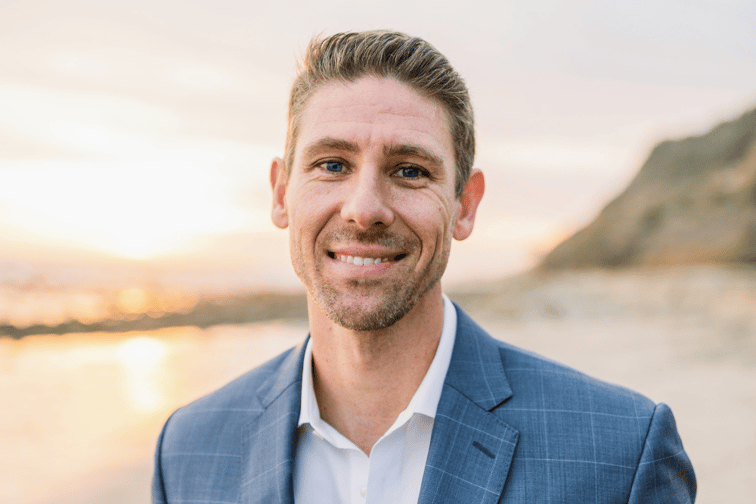

Wildfire season is well underway in the US west coast. Historically, most wildfires occur between June and August, but warmer temperatures and wind have kicked off massive blazes as early as April. The early season, coupled with last year’s catastrophic losses, has property and commercial brokers bracing for tougher market conditions.
“It’s been rough for a while, and more and more it’s feeling like there’s not much light at the end of the tunnel,” Kyle Jansen (pictured), senior vice president, property broker at Amwins Group, told Insurance Business.
“Rates have continued to go through the roof while capacity is being restricted further and further. Our insurers are having trouble obtaining the reinsurance that they were able to in the past, so we’re just seeing more capacity restriction from carriers.”
Most recently, a wildfire that erupted in California during Fourth of July celebrations more than doubled in size overnight, razing more than 3,000 acres, The Guardian reported. The fast-moving blaze, dubbed the Electra fire,a forced hundreds of people to evacuate in the east of Sacramento.
But it’s just one among dozens of blazes burning amid intense and prolonged dry conditions in the west coast. The National Interagency Fire Center (NIFC) said wildfires have torched more than 4.6 million acres this year. The figure is already more than double the 10-year average, with the typical peak of the wildfire season still months away.
“It feels a little bit scarier, a little bit more like it's imminently upon us,” Janson continued. As fires become more widespread, many insurers are using hazard measuring tools such as the CoreLogic wildfire risk score, which rates wildfire risk to properties from a scale of one to 100, and they’re putting hard caps on risk scores they will accept. Other carriers are just pulling out of the space entirely.
“Insurers haven’t been able to keep up with the losses. You can only throw so much rate at it, and it quickly gets to the point where insureds just can’t afford it. It just doesn’t make sense,” said Jansen.
“For carriers that are still in the game, it’s been a matter of limiting the capacity, being mindful, and tracking where their capacity is deployed geographically so they’re not exposed too much from a single event.”
But even this strategy is posing issues for insurers, Janson pointed out, because some wildfire events are so massive and widespread that it becomes difficult to predict which areas might be exposed.
“We’re seeing carriers limit their capacity to between $1 million to $2.5 million per carrier. To put together limits we’re having to patchwork-quilt together tiny pieces from several carriers,” said Jansen.
With the market squeezed by high rates and limited capacity, and no short-term fixes in sight, insureds must take wildfire mitigation into their own hands or risk suffering disastrous losses.
Jansen said a growing number of private wildfire mitigation options, such as installing sprinklers or water tanks on site, hiring private fire trucks, or clearing brush, can go a long way in reducing the perils for commercial property and homeowners. Though costly, they can help bring rates down and give underwriters more confidence, Jansen said, though he cautioned there was no perfect fix.
“But maybe if you try a little bit of all these methods over time, we can make some improvements,” he added.
Long-term solutions also need to come from policy and changes from the construction side. Governments could authorize more widespread, controlled burns and improve forestry management to reduce wildfire outbreaks. Shifting to fire-resistant building materials can also improve resilience.
“More thoughtfully built communities that take fire risk into account – that’s going to take perhaps decades to make a big difference. There were so many communities that were built when we as a state were less in tune with the wildfire exposures, and frankly, it just wasn't as bad as it is now. It seems like every year we're setting new records for wildfire severity and frequency,” Jansen observed.
In terms of finding adequate coverage, the California FAIR plan has been one of the few solutions available. The plan, created in 1968, provides basic fire insurance policies for high-risk properties that traditional insurers won’t cover.
“It’s not perfect: it has limited coverage, it’s far less broad than special property policies that you would normally place, but it’s a solution,” Jansen noted.
The FAIR plan may be the only solution accessible to those in wildfire zones. California suffered one of its worst wildfire seasons last year, as two of the largest fires in the state’s history ravaged more than a million acres.
“It’s been unrelenting, year after year, and it just seems like it’s trending towards getting worse. I don’t blame insurance companies for being nervous and exiting the space. But we do need carriers to try to stay in it, to try to take a careful approach where they can still be profitable, because insureds really do need solutions,” said Jansen.
